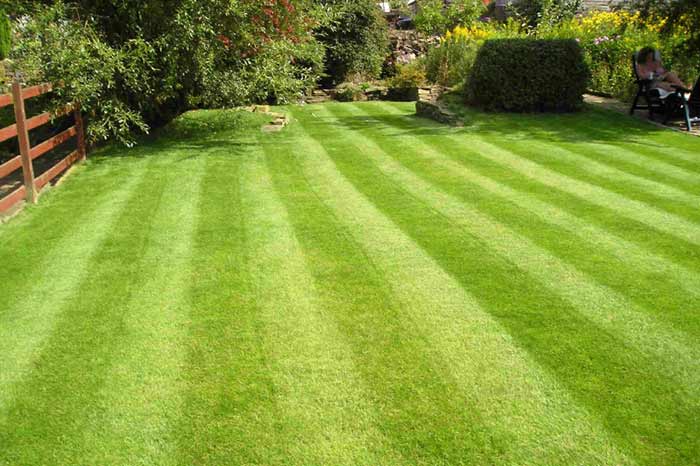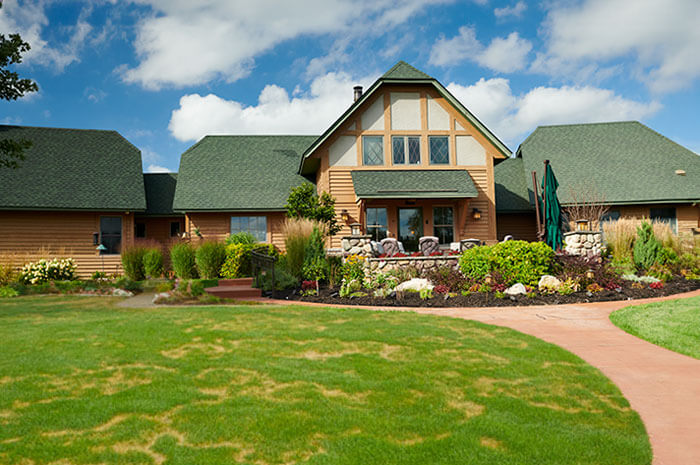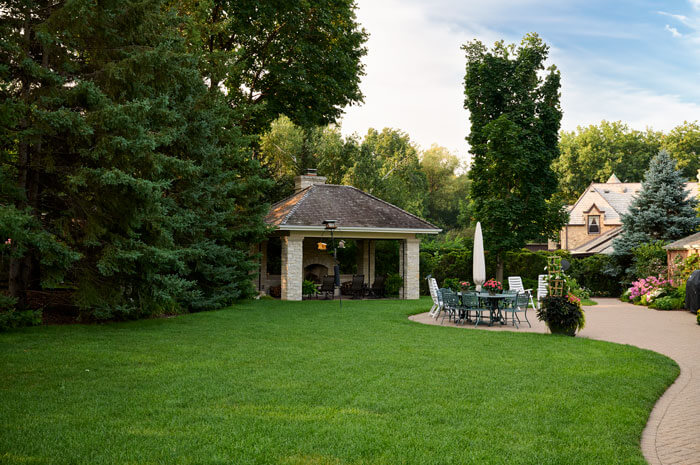
Fairy Rings
Caused by more than 50 varieties of fungus, the rings vary in size and appearance but all form in damp conditions in soil that is high in woody organic matter, which is usually from buried debris or tree stumps.
Look for: Rings of fast-growing, dark-green grass with centers composed of weeds, thin turf, or dead grass. Midsummer and fall rings are more apt to be composed of dead grass.
Management: The rings are difficult to remove unless completely dug out to a minimum depth of 1 foot. Aerating the ring area to improve water penetration and fertilizing to minimize color variation are helpful.
Why is this disease called “Fairy Ring?”
Stripe Smut
This disease forms in damp conditions and causes yellow grass and stunted growth in 6 to 12-inch patches. Stripe smut then causes the grass to turn black and leads to dry, shredded and curled grass blades.
Look for: Development of characteristic black stripes of erupted spores along grass blades that later become dry, shredded, and curled.
Management: Maintain adequate fertilization, water well, mow frequently, and bag clippings. If the disease persists, stop wasting time and money on fungicides, and instead upgrade your lawn to a newer, disease-resistant cultivar. Consult your Cooperative Extension Service (CSREES) for the best cultivar for your area.
Necrotic Ring Spot
Fungus is active during cool, moist periods; however, you will frequently not see the damage until the turf is stressed.
Look for: Circular “frog-eye” patterns of 6 to 12 inches with matted, straw-colored grass surrounding a tuft of green grass. As infection advances, roots and crowns may turn brown to black. Thatch may decompose in affected areas, giving them a sunken, or “donut” appearance.
Management: Overseed your yard with disease-resistant cultivars of Tall fescue and Perennial ryegrasses or use bluegrasses. Lessen drought and heat stress with watering. Avoid excessive fertilizer use. Remove excess thatch, and maintain adequate aeration and drainage.
Drechslera melting-out and leaf spot
This disease goes through two phases, the leafspot phase, and the meltin-out phase. This disease is especially destructive on over-fertilized, lush bluegrasses. Cloudy, moist weather in the 70 to 85 degrees Fahrenheit range brings on the telltale leaf-spot phase. Evening watering promotes dreschlera leaf spot.
Look for: Distinctive dark purple spots that develop into buff-colored oval lesions with a dark brown or purple margin. Blades progress to yellow and then turn tan. During the melting-out phase, rot develops in roots and crowns.
Management: Avoid excessive nitrogen fertilizer, water infrequently but deeply, mow high, aerate, and remove excess thatch. If the disease persists, upgrade your lawn to a disease-resistant cultivar.



